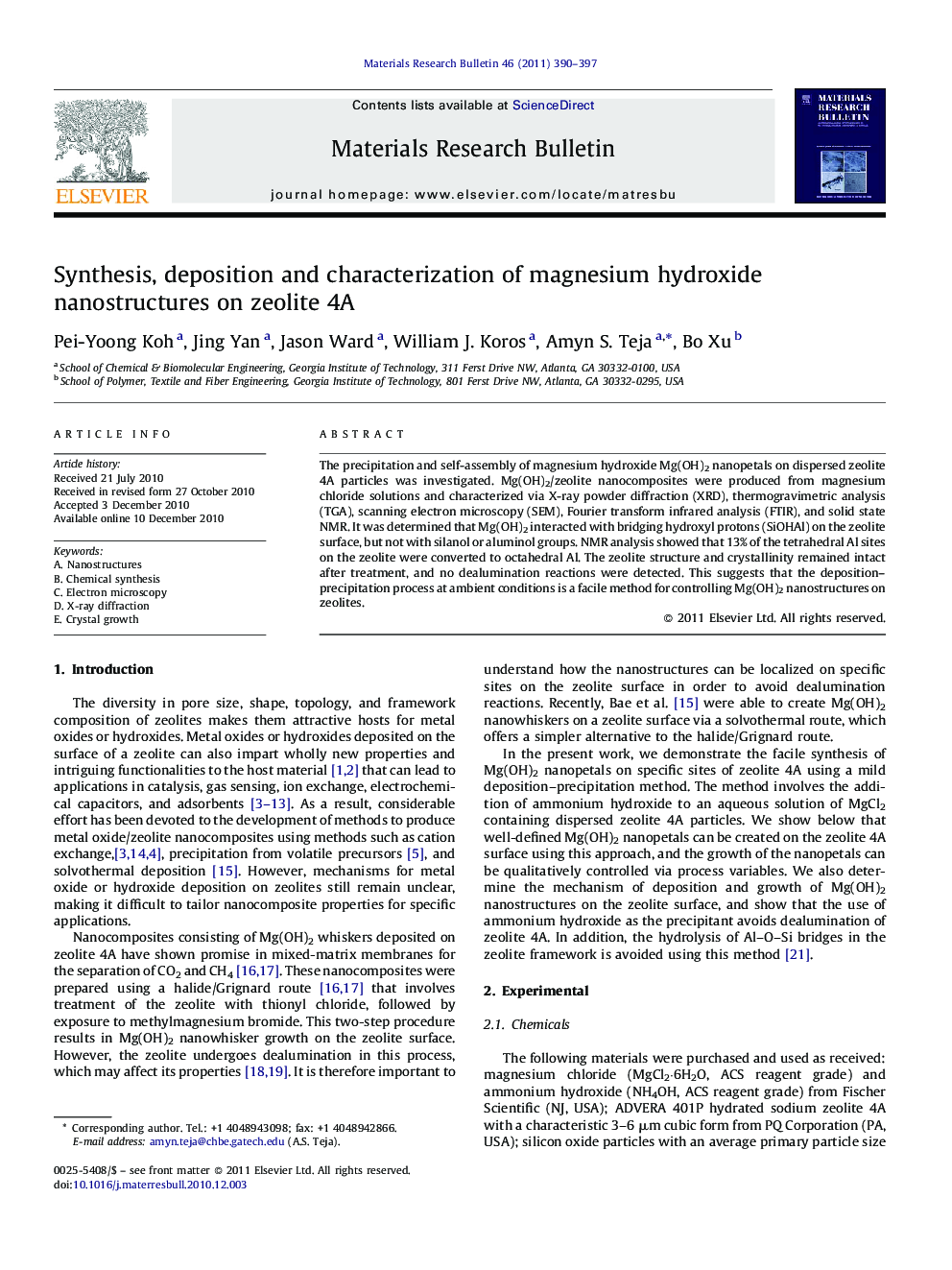| Article ID | Journal | Published Year | Pages | File Type |
|---|---|---|---|---|
| 1490277 | Materials Research Bulletin | 2011 | 8 Pages |
The precipitation and self-assembly of magnesium hydroxide Mg(OH)2 nanopetals on dispersed zeolite 4A particles was investigated. Mg(OH)2/zeolite nanocomposites were produced from magnesium chloride solutions and characterized via X-ray powder diffraction (XRD), thermogravimetric analysis (TGA), scanning electron microscopy (SEM), Fourier transform infrared analysis (FTIR), and solid state NMR. It was determined that Mg(OH)2 interacted with bridging hydroxyl protons (SiOHAl) on the zeolite surface, but not with silanol or aluminol groups. NMR analysis showed that 13% of the tetrahedral Al sites on the zeolite were converted to octahedral Al. The zeolite structure and crystallinity remained intact after treatment, and no dealumination reactions were detected. This suggests that the deposition–precipitation process at ambient conditions is a facile method for controlling Mg(OH)2 nanostructures on zeolites.
Graphical abstractFigure optionsDownload full-size imageDownload as PowerPoint slideResearch highlights▶ Reports a simple precipitation-growth method to produce nanostructures of Mg(OH)2 on the surface of zeolite 4A. ▶ Able to control the growth of the nanostructures by manipulating the experimental procedure. ▶ Able to deposit Mg(OH)2 onto specific sites namely bridging hydroxyl protons (SiOHAl) on the surface of zeolite 4A.
